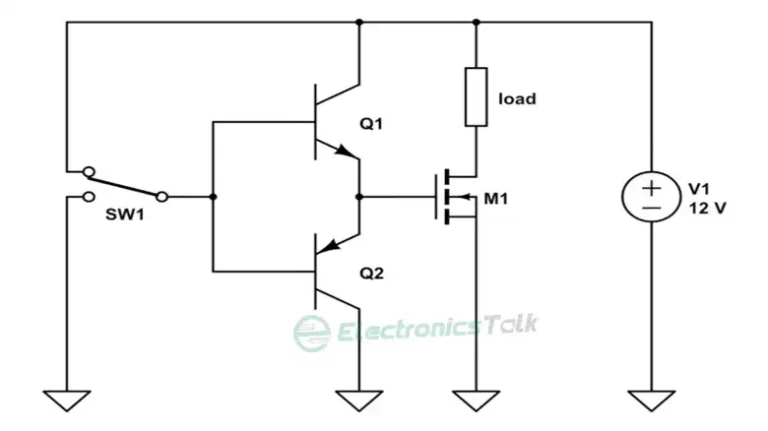Is 220 Ohm Resistor Enough for LED | An In-Depth Guide
When powering an LED (Light Emitting Diode), it’s essential to use a resistor to limit the current flowing through the LED. The question often arises: is a 220-ohm resistor sufficient for this purpose? This article will explore the answer to this query. This article seeks to address this query exhaustively.
Beginning with a concise review of LED operation and the role resistors play in managing current flow, it progresses to the analytical assessment of the 220 Ohm resistor with LED circuits. Detailed calculations and evaluations will guide the determination of the optimal resistor value for varied LED configurations.

Understanding LED Characteristics
LEDs have specific voltage and current requirements. A typical LED requires a forward voltage of around 2 volts and a forward current of 20 milliamps (mA). Exceeding these values can lead to the LED burning out.
Importance of the Right Resistor Value
When delving into the world of electronic components and LED configurations, pinpointing the accurate resistor value emerges as a critical aspect. The perfect balance in resistance is fundamental to safeguarding the LED from potential overcurrent scenarios, averting accelerated wear and tear or abrupt failure.
On the flip side, a resistance value that overshoots the mark can throttle the current, dimming the LED’s brilliance and hampering its operation. To determine the exact resistance needed, Ohm’s Law must be used to its fullest extent.
This attention to detail guarantees the LED’s operation within its designated current boundaries, warding off damage and boosting both its reliability and efficiency. This careful approach to resistor value selection lays the groundwork for the enhanced durability and peak performance of LEDs in various circuit setups.
Fundamentals: Ohm’s Law
Ohm’s Law, a foundational principle in electronics, expresses the relationship between voltage (V), current (I), and resistance (R) in the equation (V = IR). Most generic LEDs necessitate a current of approximately 20 milliamps (mA) and possess a forward voltage (the voltage drop across the LED when current flows through it) ranging from 2 to 3.5 volts.
Logical Exploration
Scenario 1
Consider an LED with a forward voltage (Vf) of 3V, integrated into a circuit powered by a 9V source:

Substituting the values:

Yields:
I ≈ 27.3 mA
The calculated current surpasses the typical LED threshold, potentially instigating premature failure of the LED due to overcurrent.
Scenario 2
In another configuration, an LED with Vf of 3.5V is connected to a 12V power supply:

Which results in:
I ≈ 36.6 mA
This current magnitude considerably exceeds the standard operating range, highlighting the imperative for a higher resistance to inhibit possible LED degradation.
Scenario 3
Evaluate a scenario with an LED (Vf) of 2V connected to a 3V power supply:

Calculates to:
I ≈ 4.5 mA
Though the current is within a secure range, the suboptimal current could potentially diminish the luminosity of the LED.
Technical Assessment and Practical Implications
The comprehensive calculations underscore that a 220-ohm resistor’s suitability is intricately linked to specific LED parameters and source voltage. A careful adherence to LED datasheet specifications is essential for optimal resistor selection. If calculations yield non-standard resistor values, selecting the nearest higher standard value is advisable.
This proactive approach mitigates potential overcurrent scenarios, safeguarding LED functionality and enhancing operational lifespan. In conclusion, a thorough, specific evaluation of each unique LED circuit configuration is indispensable to ensure optimal performance and longevity.
FAQs – Frequently Asked Questions and Answers
Q1. How does the forward voltage of an LED impact the selection of a resistor?
The forward voltage (Vf) of an LED is essential for calculating the voltage drop across the resistor and subsequently determining the appropriate resistor value using Ohm’s Law. A thorough understanding of Vf ensures that the chosen resistor maintains the LED’s current within safe operational limits.
Q2. Are there any potential issues in using a 220-ohm resistor in a circuit with varying voltage sources?
Utilizing a 220-ohm resistor in circuits with diverse voltage sources can lead to either excessive current, causing potential damage to the LED, or insufficient current, resulting in suboptimal LED brightness. The calculations based on Ohm’s Laws are vital to ascertain the compatibility of a 220-ohm resistor with varying voltage sources.
Q3. In scenarios yielding non-standard resistor values after calculations, how crucial is it to choose the next higher standard resistor value?
It’s imperative to opt for the nearest higher standard resistor value in such scenarios. This approach guards against possible overcurrent conditions, ensuring the LED’s operational efficiency and longevity without compromising performance parameters.
Conclusion
In conclusion, while a 220-ohm resistor may be suitable for some LED setups, a detailed, application-specific evaluation is crucial to ensure optimal LED performance, longevity, and protection from potential overcurrent scenarios.



![[5 Tips] Can Soldering Damage Diode?](https://www.electronicstalk.org/wp-content/uploads/2023/08/Can-Soldering-Damage-Diode-768x431.webp)
![Can I Use 1n4004 Instead of 1n4001? [Advantages Explained]](https://www.electronicstalk.org/wp-content/uploads/2023/07/Can-I-Use-1n4004-Instead-of-1n4001-768x431.webp)
![Can Diodes Overheat [Reasons and Solutions]](https://www.electronicstalk.org/wp-content/uploads/2023/07/Can-Diodes-Overheat-768x431.webp)